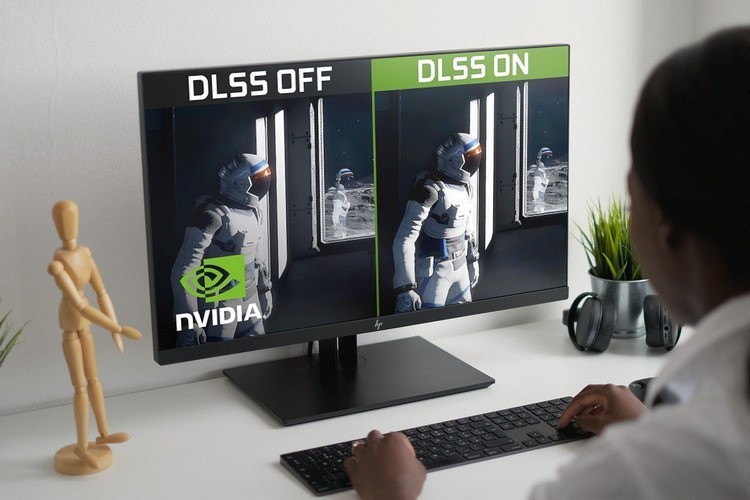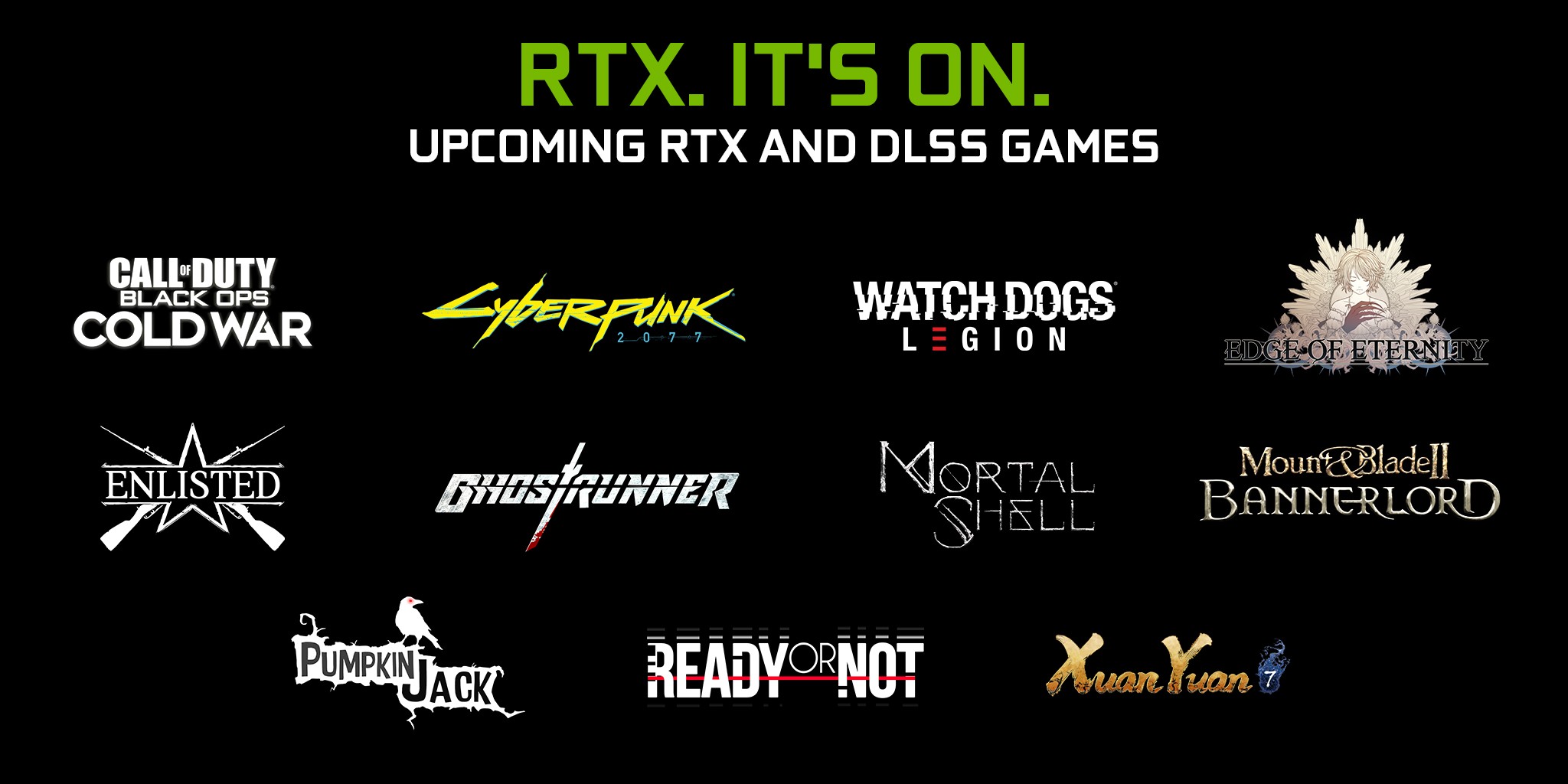The RTX graphics cards from Nvidia have two distinct features that set them apart from their GTX-series counterparts. Although the first is well-known Ray Tracing, the second, known as DLSS, remains relatively ambiguous among mainstream gamers.
So, today, we’ll go over everything you need to know about Nvidia DLSS, like what it is, what it does, the games it supports, and how it will help you better your gameplay.
NVIDIA DLSS Technology – How It Helps In Improving Gameplay
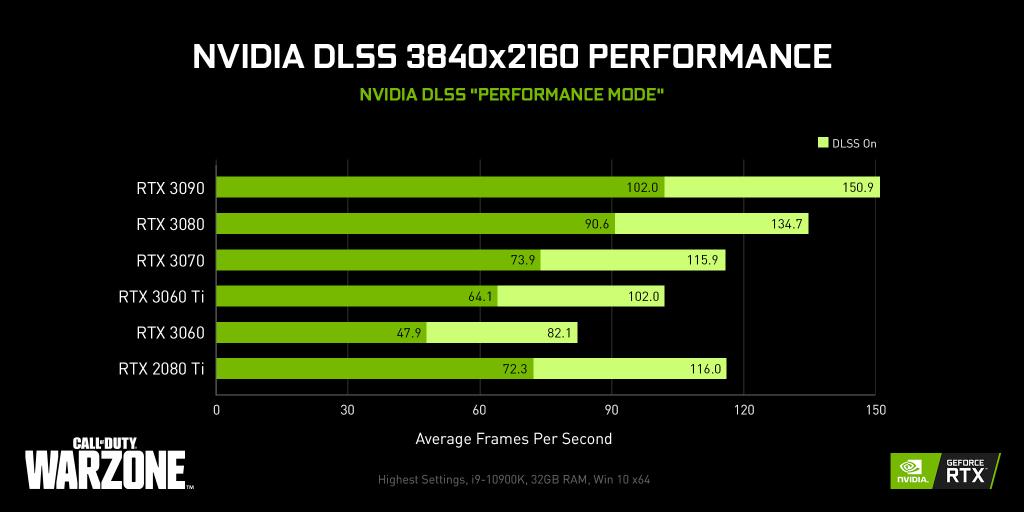 In this post, we’ll go over Nvidia DLSS in-depth and show you how it improves the gaming experience by using GeForce RTX graphics cards. We’ll also compare it to AMD’s rumored upcoming counterpart, FSR, to see what consistency, frame rates, and efficiency it could bring to the table. So, without further ado, let’s get started.
In this post, we’ll go over Nvidia DLSS in-depth and show you how it improves the gaming experience by using GeForce RTX graphics cards. We’ll also compare it to AMD’s rumored upcoming counterpart, FSR, to see what consistency, frame rates, and efficiency it could bring to the table. So, without further ado, let’s get started.
About NVIDIA DLSS Technology
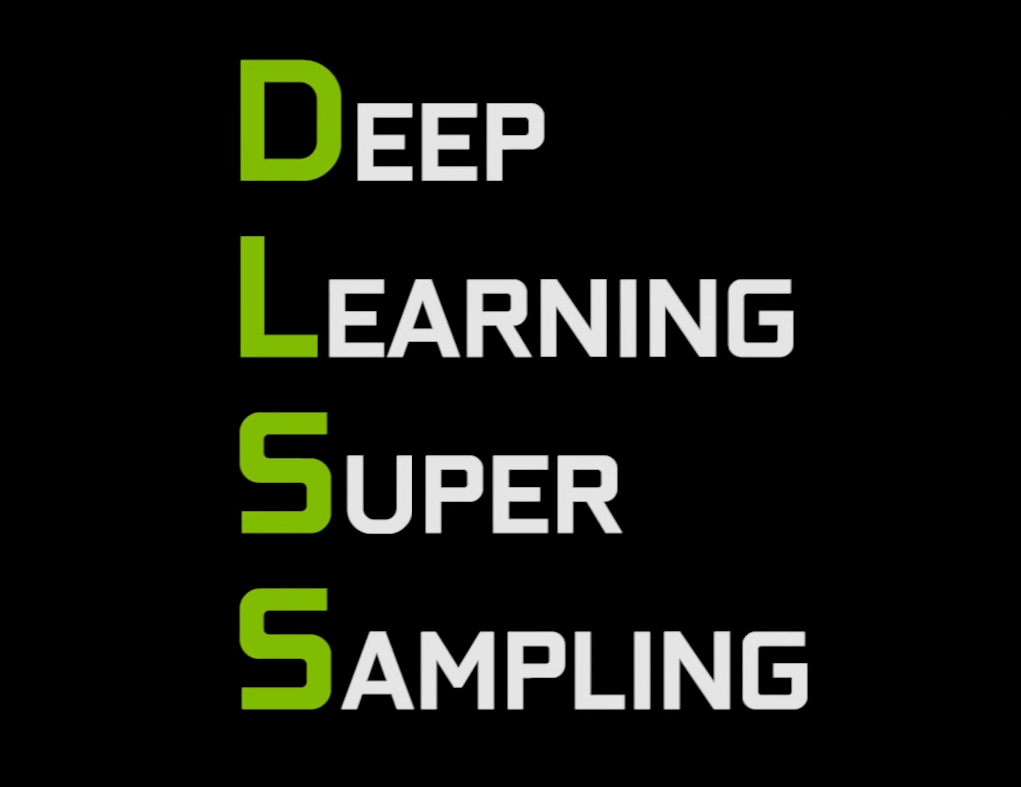
Image Credits: Notebookcheck.net
Nvidia’s AI-based upscaling algorithm DLSS (Deep Learning Super Sampling) uses dedicated Tensor Cores on RTX cards to increase frame rates without compromising image quality.
The technology makes use of AI to boost FPS in games with graphically demanding workloads. Gamers can use higher graphics settings and resolutions with DLSS enabled while still retaining impressive framerates.
NVIDIA DLSS Technology – Working Explained
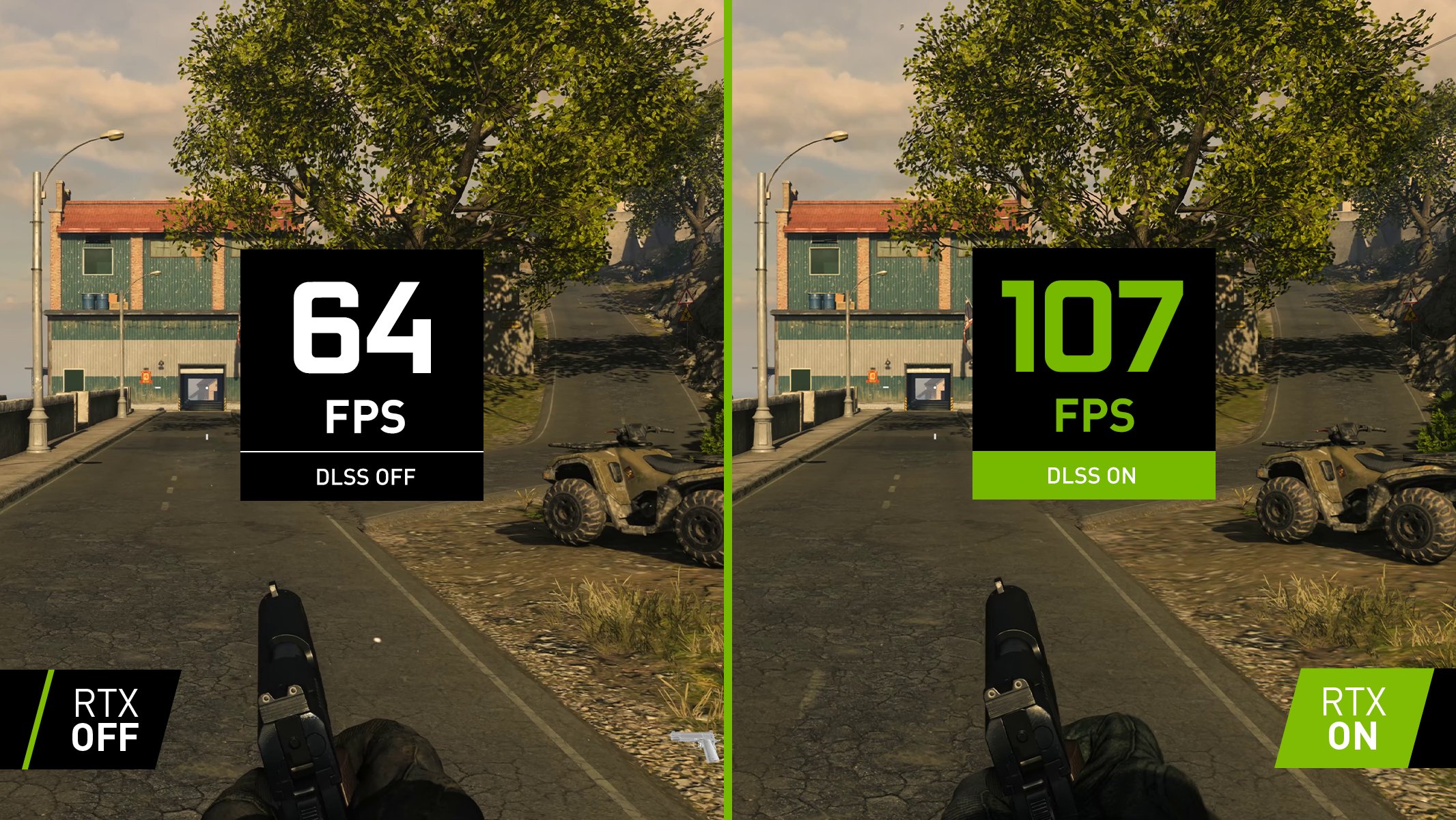
Nvidia defines DLSS as a “groundbreaking AI rendering technology that improves graphics efficiency using dedicated Tensor Core AI processors on GeForce RTX GPUs,” according to the company’s website.
“DLSS taps into the strength of a deep learning neural network to improve frame rates and produce stunning, sharp images for your games,” according to the company.
To use DLSS, the AI algorithm first removes a large number of aliased frames from the target game. It then uses either super-sampling or accumulation rendering to create a similar “full picture.”
These paired frames (aliased and perfect) are then fed into a computer, which trains the DLSS model to identify aliased inputs and produce high-quality anti-aliased images that as closely as possible fit the ‘perfect frame.’
Then, rather than merely adding anti-aliasing to frames, the procedure is repeated to train the AI model to produce additional pixels. This aims to improve the input’s resolution. When all of these methods are used together, the GPU is able to render the game in full resolution at a faster frame rate. As you play, the AI algorithm intelligently ‘learns’ about the game and improves over time.
Advantages of NVIDIA DLSS Technology
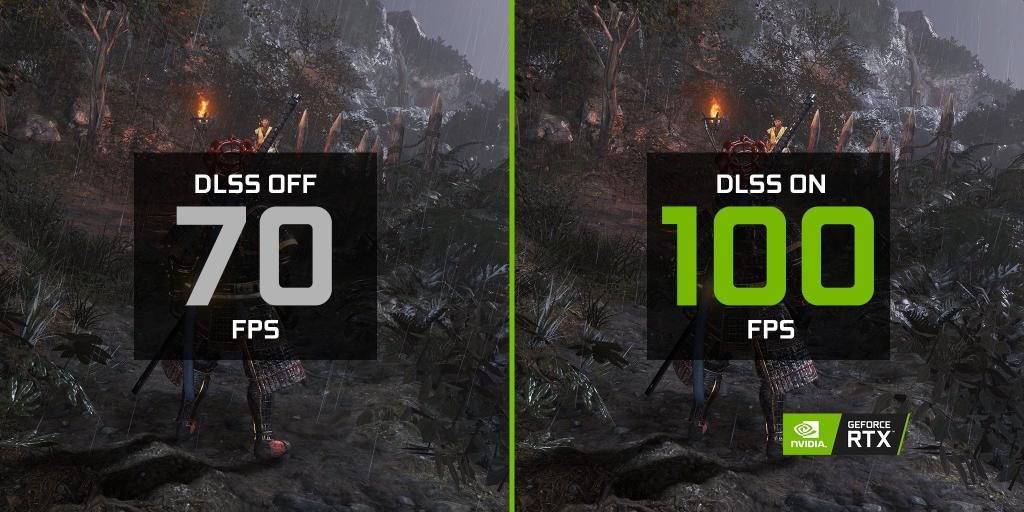
Nvidia claims that the image quality generated by DLSS is comparable to native resolution since it employs advanced AI rendering.
In reality, the company claims that the technology will provide ‘better image resolution’ by only making a fraction of the pixels traditionally. Sharper videos, clearer details, and increased frame-to-frame stability are all benefits of advanced temporal feedback techniques.
DLSS uses dedicated Tensor Cores to boost frame rates and give you the headroom you need to drive graphics settings and resolutions all the way up to 8K. The newer and faster AI variant in the RTX 30-series cards, DLSS 2.0, more effectively uses Tensor Cores to perform 2x faster than the previous.
This increases frame rates and reduces limitations on GPUs, configurations, and resolutions that are supported. It’s due to emerging technologies that have a generic approach, which eliminates the need for the AI model to prepare for each game individually.
Why NVIDIA DLSS Technology Not Applicable To All Resolutions
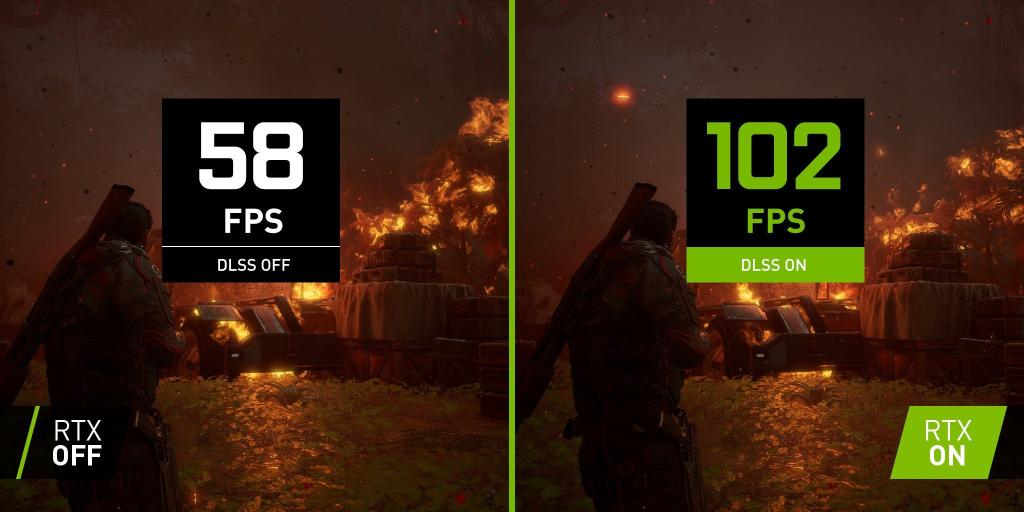
Since each game has various characteristics depending on the game engine and the time spent practising the AI model, the outcomes of DLSS vary from one game to the next.
It is not, though, applicable under all circumstances or at all resolutions. This is because it is often simply easier and more qualitative to render frames using native, non-AI technologies. The GPU’s frame rendering time may be faster than the DLSS execution time if your game is already running at high frame rates.
DLSS isn’t usable in these situations so it wouldn’t increase the frame rate. Indeed, it will slow down rendering times in certain situations, hurting gameplay.
However, DLSS offers the best efficiency improvement if the game is still heavily taxing the GPU. To boost your FPS benefits, you should increase your settings.
“DLSS needs a set amount of GPU time per frame to operate the deep neural network,” Nvidia explains the technicality. As a result, DLSS is more beneficial to games that run at reduced frame rates or at higher resolutions. DLSS does not improve performance in games with high frame rates or low resolutions.”
“We don’t allow DLSS when your GPU’s frame rendering time is less than the time it takes to execute the DLSS model. We only use DLSS in situations where you can see a performance boost. According to Nvidia’s website, “DLSS availability is game-specific and depends on the GPU and chosen display resolution.”
NVIDIA DLSS Technology – What Are Its Drawbacks
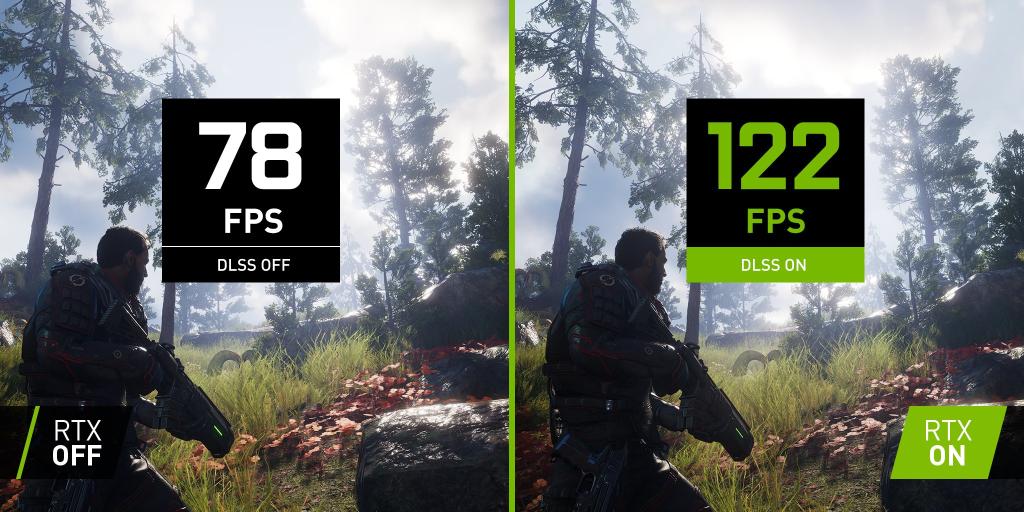
DLSS 2.0 is a big step forward from the first-generation release, which was mostly a disaster. It isn’t flawless, however, and reports about latency and smeared frames continue to overwhelm Nvidia forums, web discussion boards, and social media. It’s particularly visible at lower resolutions, where the extra frames seem to degrade picture sharpness.
Nvidia acknowledges that some of the findings are “not where we expect them to be” and says it is trying to address these issues.
Nvidia’s Andrew Edelsten said in a Q&A earlier this year that the firm is “listening to fan suggestions around DLSS at lower resolutions, and (is) working on it as a top priority.”
To boost consistency, we’re adding more training data and trying out some new approaches, and we’ll keep training the deep neural network over time.”
About Ray Tracing And How It Helps NVIDIA’s DLSS Technology
As the first RTX 20-series range debuted in 2018, Ray Tracing was the standout feature of Nvidia’s RTX graphics cards.
Nvidia claims that it is a graphics processing technique that achieves a high level of visual realism. Although Ray Tracing can enhance overall visual effects in games, it comes with a price.
Since the technology is so hardware-intensive, it may have a detrimental impact on performance. DLSS effectively combats this, allowing you to keep high settings at high resolutions without sacrificing quality.
When using both DLSS and Ray Tracing, frame rates in some games will increase by up to 75%, according to Nvidia. Remedy’s ‘Control’ and Kojima’s ‘Death Stranding’ are two of the sponsored games that benefit the most from DLSS by using Ray Tracing.
Some sports, on the other hand, offer a wide range of advantages. With Ray Tracing turned on, there’s no guarantee that the hardware will be able to increase frame rates in your favorite game.
NVIDIA DLSS Technology – What All GPUs Support The Feature
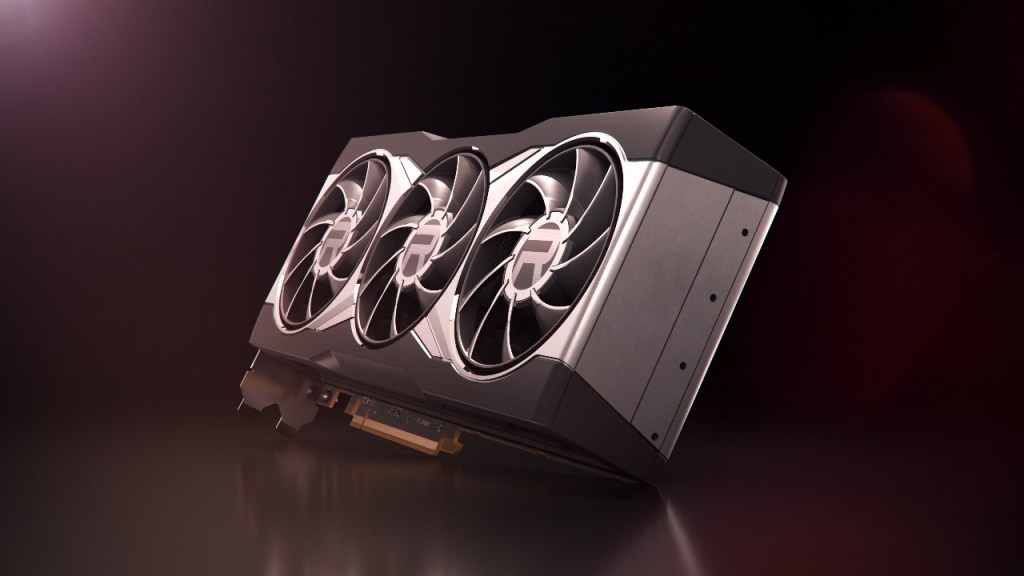
Only graphics cards with dedicated Tensor Cores support Nvidia DLSS. When the RTX 20-series GPUs were released in late 2018, it was announced as one of their main features.
The technology is currently limited to GeForce RTX 20- and RTX 30-series GPUs. The technology is also expected to be supported by upcoming RTX-series graphics cards with dedicated Tensor Cores. All of the GPUs that support DLSS and Ray Tracing are listed below:
- GeForce RTX 2060
- GeForce RTX 2060 Super
- GeForce RTX 2070
- GeForce RTX 2070 Super
- GeForce RTX 2080
- GeForce RTX 2080 Super
- GeForce RTX 2080 Ti
- GeForce RTX 3060
- GeForce RTX 3060 Ti
- GeForce RTX 3070
- GeForce RTX 3080
- GeForce RTX 3090
NVIDIA GLSS Technology– List Of Video Games Which Will Support DLSS & Ray Tracing
Only a few games embraced DLSS when it first came out. However, the list has since expanded to include scores of titles such as Battlefield V, Final Fantasy XV, Cyberpunk 2077, among others.
Yeah, Crysis (Remastered) can be played on the new RTX GPUs with DLSS. As of April 2021, below is the full list of games that support DLSS:
- Anthem
- Battlefield V
- Bright Memory
- Call of Duty: Black Ops Cold War / Modern Warfare / Warzone
- Control
- CRSED: F.O.A.D. (Formerly Cuisine Royale)
- Crysis Remastered
- Cyberpunk 2077
- DEATH STRANDING
- Deliver Us the Moon
- Edge of Eternity
- Enlisted
- F1 2020
- Final Fantasy XV
- Fortnite
- Ghostrunner
- Gu Jian Qi Tan Online
- Iron Conflict
- Justice
- Marvel’s Avengers
- MechWarrior 5: Mercenaries
- Metro Exodus & Metro Exodus PC Enhanced Edition
- Minecraft with RTX For Windows 10
- Monster Hunter: World
- Moonlight Blade
- Mortal Shell
- Mount & Blade II: Bannerlord
- Nioh 2 – The Complete Edition
- Outriders
- Pumpkin Jack
- Shadow of the Tomb Raider
- System Shock
- The Fabled Woods
- The Medium
- War Thunder
- Watch Dogs: Legion
- Wolfenstein: Youngblood
- Xuan-Yuan Sword VII
On Nvidia’s official website, you should keep an eye out for new additions to the list.
How To Use DLSS In Video Games?
Download the new GeForce Game Ready drivers from GeForce Experience or Nvidia’s official website to use DLSS in any compatible game. You can also read our in-depth guide to updating drivers on your Windows 10 screen.
AMD’s DLSS VS NVIDIA DLSS – What You Should Know About FSR?
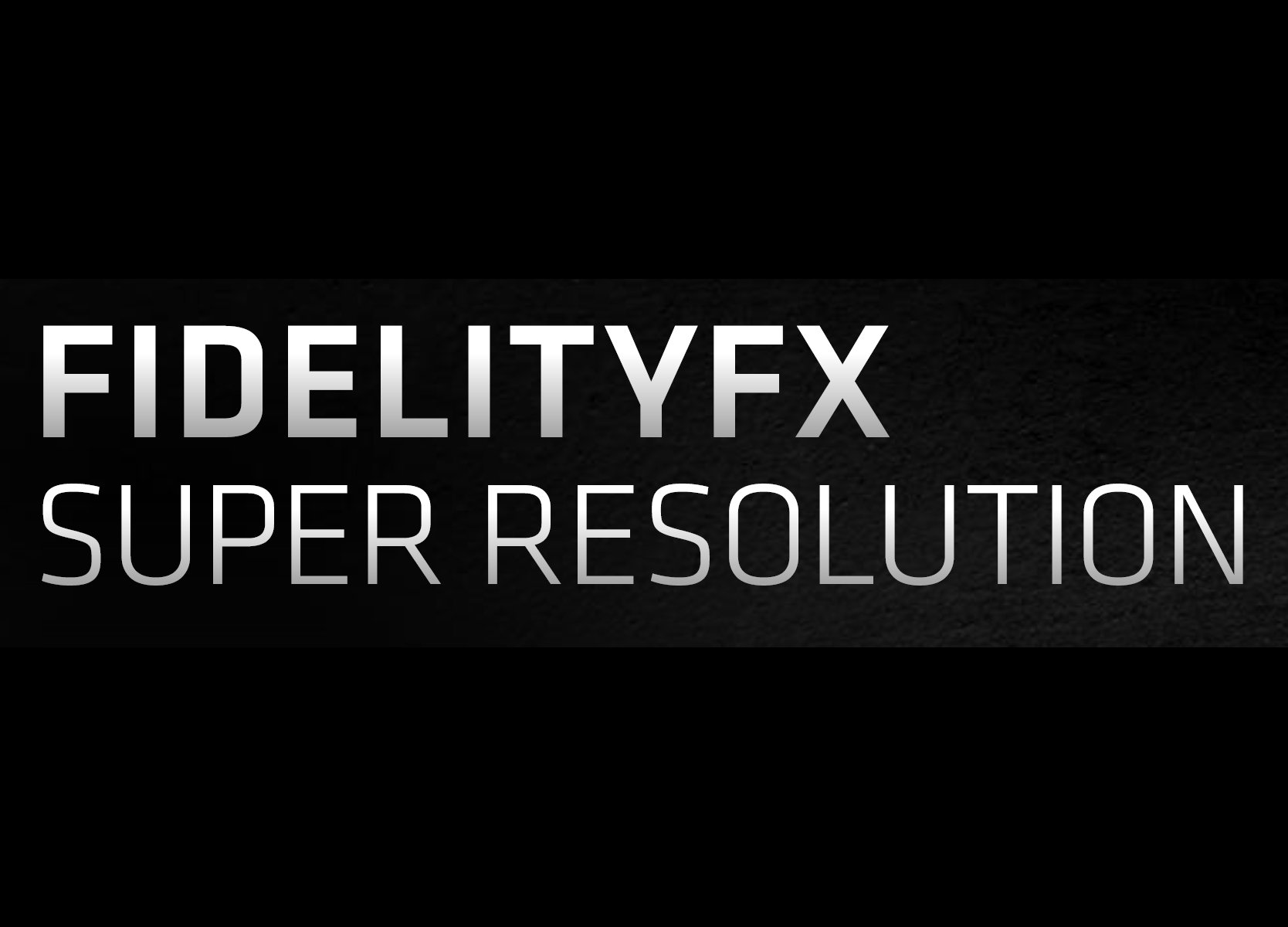
You can also update your game to the new version to see the DLSS feature in the graphics settings. Go to the configuration menu and allow DLSS until you have the new drivers and the latest version of the game.
Quality Mode is recommended for 1920 x 1080 and 2560 x 1440 resolutions, Performance Mode for 3840 x 2160 resolutions, and Ultra Performance Mode for 7680 x 4320 resolutions, according to Nvidia.
If you’re not sure what the various resolutions mean, check out our in-depth comparison of 720p, 1080p, and 4K resolutions.
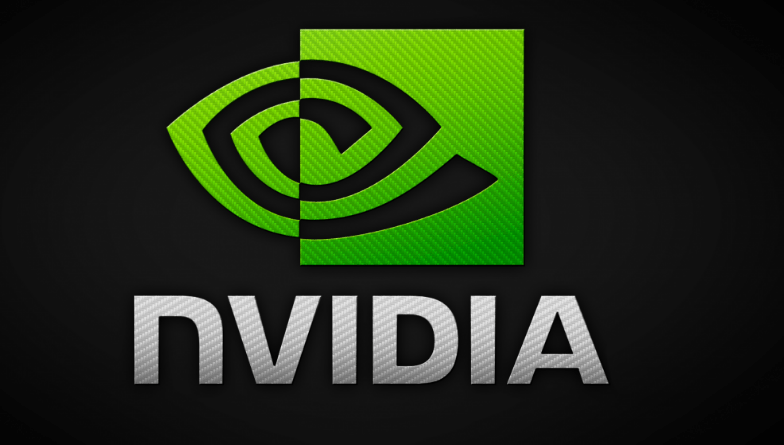
AMD’s DLSS rival, rumored to be released next month, will add DLSS-like capabilities to the new Radeon graphics cards. Known as ‘FidelityFX Super Resolution’ (FSR), this platform is now being tested by many game developers for their new releases.
FSR will be a cross-platform technology as part of the hardware-agnostic GPUOpen catalog of effects, according to YouTube gaming channel Coreteks. That means it can fit for Nvidia graphics cards as well, assuming Nvidia adds support for it. Although AMD has yet to confirm this, it aligns with the company’s adaptive sync technology, FreeSync, which is also available on Nvidia GPUs.
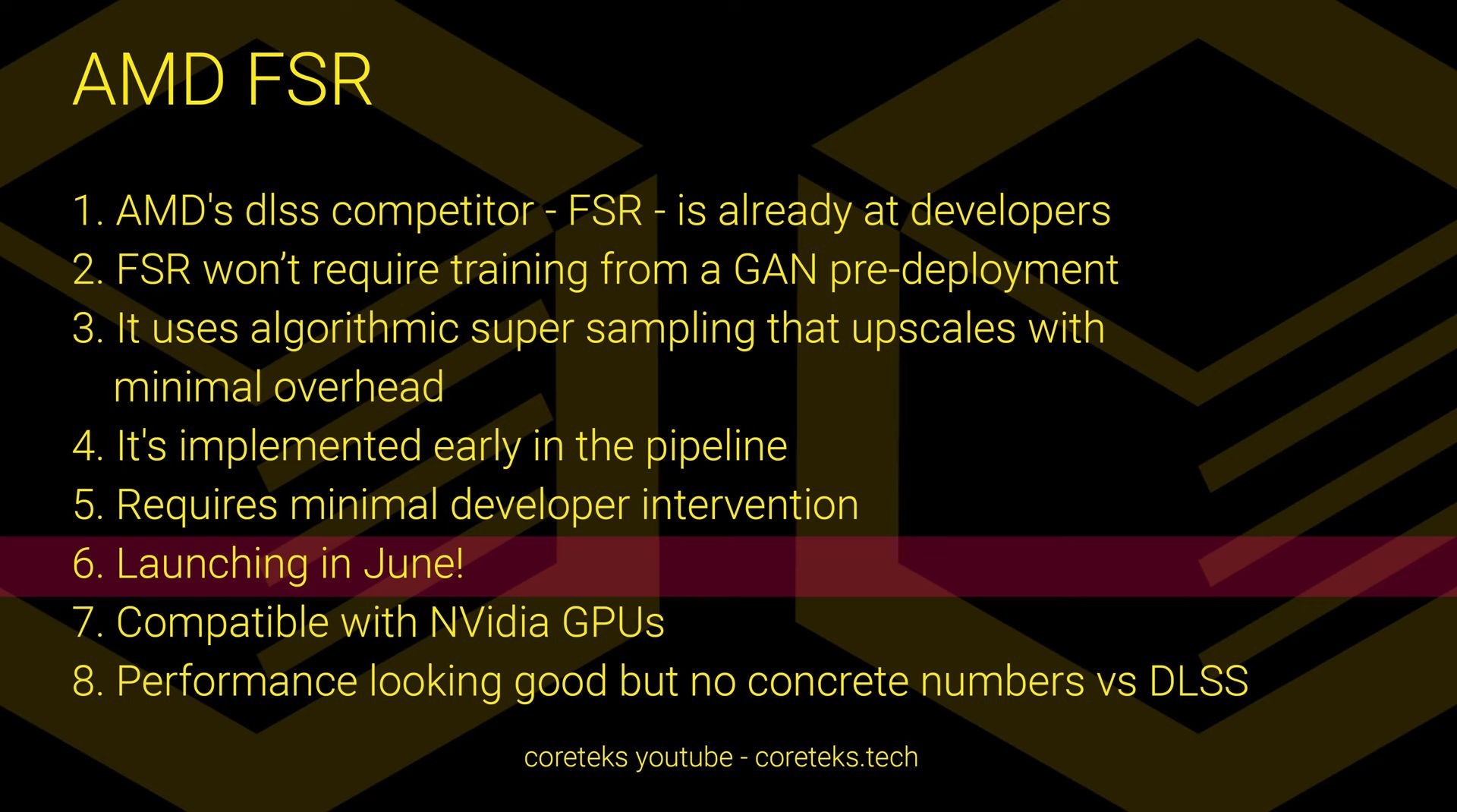
Meanwhile, Coreteks says that FSR would upscale frames using algorithmic supersampling rather than excessive hardware capital.
Furthermore, developer participation in the process is expected to be limited, implying that studios will be able to quickly integrate support for the feature without devoting a lot of resources. The entire conversation can be seen in the video below.
DLSS has had a complete monopoly for a long time, with little compensation from AMD. With the upcoming launch of AMD’s FSR, that is set to change.
Though DLSS is getting better at what it does, the arrival of rivalry in the coming months should add more spice to the mix. So, do you think AMD’s FSR would be able to compete with Nvidia’s DLSS?
Also, did this explainer help you learn the fundamentals of DLSS technology? Let us know what you think in the comments section below.
Also Read:
- @MalwareHunterTeam busts SNL Crypto Scam
- US FTC Says Repair Restrictions By Manufacturers Impacts Consumer Rights & Small Businesses
- Fed Up Of WhatsApp’s New Policy? Here’s How To Delete WhatsApp Account
- Salesforce Sent Oxygen Concentrators In The Air
- Apple Hid A Mass Hack On Million Users Back In 2015
- PUBG Mobile Patch 1.4 brings Godzilla And King Kong
- Playstation 5 Consoles Will Be Hard To Find In Stores Even In 2022
- The Global Computer Chip Shortage

